There ain’t no organization. There ain’t no one in charge. There ain’t no schedule. There ain’t no promise of water on your favorite run on any particular day. Those are the things that ain’t promised.
—Bob Britt, veteran ALF attendee and open boater.
On a blue sky afternoon, a parade of vans and trucks begins to arrive at Cherohala Mountain Trails Camp-ground located at the edge of Tennessee’s Cherokee National Forest. Bearing brightly colored canoes and hauling trailers, the vehicles circle the camp’s sunny, five-acre pasture. Those who have been here before know the best tent sites and are quick to help the newcomers.
“Careful, there,” they say. “You’re gonna be in a lake when the rain starts.”
To the west, storm clouds have begun to cross Walden’s Ridge. By morning, everything will be wet—great news to these boaters traveling from all corners of the continent every March, hoping to paddle the area’s steep and swollen creeks.
What Is ‘Ain’t Louie Fest’, Affectionately Known As ALF
Is an annual 10-day paddling non-event in southeast Tennessee, celebrating the whitewater canoeing subculture. Around 200 paddlers attended this year’s ALF, a contrast to the 2,500 paddlers who attended last year’s Gauley Fest, West Virginia’s infamous whitewater festival, which attracts mostly kayakers.
Open boating is a small but mighty niche, or so the ALFers like to think.
ALF’s Obscurity Is Only Part Of What Makes It Unique
Especially unusual in the age of GoPro and Red Bull sponsorships is its complete autonomy. There are no festival officials, no set schedules and no registration fees. In fact, there’s no registration at all. There’s not even a website. Contrast this again with Gauley Fest, organized by nonprofit American Whitewater, for which the festival helped raise more than $120,000 in 2016.
Many ALFers will attend Gauley Fest, too, held in September. They will attend Cheat Fest in May, Beaver Fest in August and others along the way. ALF is their prelude to the mainstream mid-Atlantic festival circuit, a once-a-year chance for this small and colorful community to dominate southeastern waterways.
Just after midnight, the rain begins, and by morning, a cold mist blankets the campground. As the festival-goers emerge from their tents, anticipation hums along with air compressors inflating float bags. Cardboard coffee cups in hands, plans begin to formulate.
Which creeks are running? Who’s driving shuttle? Does anybody remember how to get to the put-in? You know the one?
“There will be lots of standing around and arguing about where to go each morning. Lots of indecisiveness and phone tag. It’s great,” says Alex Vargas, a 32-year-old independent building contractor from Chattanooga, Tennessee, who has been attending ALF since its inaugural year.
For The Last Five Years, Vargas Has Been In Charge Of Organizing ALF’s Annual Canoe Race, Making His Role As Official As ALF Ever Gets
Known as Only the Upper Tellico (O.U.T.) Race, the course follows a two-mile, class IV stretch of the Tellico River, finishing with the spectacular, roadside Baby Falls—a 15-foot drop into a pool. It attracts hundreds of spectators. Because the forest service prohibits parties greater than 60 within the national forest, Vargas must obtain a special permit. This is where race preparation begins and ends. Whether it will be held the Saturday or Sunday, Vargas has yet to decide.
“ALF is disorganized, that’s the point,” says Shawn Malone, 46, who owns a shuttle and outfitting company in Hixson, Tennessee, and who attends each year with his wife, Dana, and 11-year-old son, River.
Malone remembers one year getting lost in the mountains while looking for the Greenbrier Creek put-in. He was driving one shuttle, leading a caravan of others. Finally, his passenger Michael “Louie” Lewis—for whom the festival is named—said, “Just stop and unload the boats! They’ll put in wherever we put-in.”
“We almost put-in on the wrong fork. We did a hike up class IV section. Too many people and not enough eddies. A perfect ALF run,” Malone says.
Who Is The Louie behind “Ain’t Louie Fest”?
Louie Is An Elusive Character Even At His Own Festival
A mess of silver hair and matching handlebar moustache, he is a native of nearby Lenoir City, so he sleeps at home rather than the campground. Many know of him only through stories, which flow like the flooded creeks. And no one lets the facts get in the way of a good Louie tale.
Louie is famously outspoken and contemptuous of kayakers.
At one point he was blocked from paddling forum BoaterTalk after he picked a fight with kayakers—calling sprayskirts dresses—but he says it was
a misunderstanding.
Open boater Rich Moore remembers one year when Louie, a crew of canoeists and one kayaker planned to run the class V Conasauga Creek. We loaded a bunch of canoes onto Louie’s truck, strapped ‘em all down. Then Louie walks over, picks up the only kayak and shoves it into the back—doesn’t strap it down or anything—and just starts driving. The boat is jumping around the whole way, and finally it falls out of the truck,” Moore says.
Louie insists the incident never happened.
“I’d never pick up a kayak,” he says. “I’ve done some sorry things in my life. But two things I’ve never done is vote for a Republican and paddle a kayak.”
This Year, Louie’s Only Visit To The Campground Is Cloudy But Bright. He walks the pasture loop with his wife, Lucero, and his 21-year-old daughter, Ana. Along the way, festival-goers gravitate to his side. They slap his back and ask him to pose for pictures, and Louie warmly obliges. His prickly reputation may precede him, but in reality, Louie, a retired high school history teacher, is a gregarious and generous man. He is responsible for introducing some of the community’s most respected open boaters to the sport, including Malone and Vargas. And he is responsible for introducing paddlers from all over the world to Southeastern whitewater.
According to Louie, ALF originated in 2003
After a representative from a well-established kayak company called canoeists fossils. Louie, an open boater of nearly 40 years, wanted to prove them wrong. So he called together all the canoeists he knew.
“Let’s show them how many of us there are,” he said.
About 40 paddlers showed up. There are other versions of the story, too.
Carole Westwood, from Ottawa, Canada, remembers it all starting around 2001, when Louie worked for boat manufacturer Dagger, which at the time still specialized in whitewater canoes. That spring, she and her husband, Andrew, made the 1,000-mile drive to Tennessee to pick up boats from Louie for the Canadian Dagger team. Enamoured with the rivers, they told their friends back home, who began asking to come along each spring.
Meanwhile, Vargas insists ALF started in 2004, in celebration of Louie’s 50th birthday. In fact, the only part of the story everyone agrees with is following the first gathering, somebody said, “We need to make this an annual thing—call it Louie Fest.”
“It Ain’t Louie Fest!” Louie Protested. And The Name Stuck
Since its beginning, Ain’t Louie Fest has grown only modestly in size, from 40 boaters the first year to just over 200.
Most new recruits learn about the event through word of mouth or social media—one of the most popular platforms for discussions is Facebook’s GDI (God Damn Independent) group. First created in 2010, GDI was intended to help a small group of Southeast open boaters plan outings. Today, it boasts 2,980 members from around the world.
Even though manufacturers Blackfly Canoes and Silverbirch Canoes regularly attend the event, ALF generally plays out under the radar of the larger whitewater community and paddling industry.
Where, When And How?
According To Louie, The Biggest Change To ALF Over Its Almost Two Decades Is It Has Become More Centralized. In 2015, Cherohala Mountain Trails Campground became the festival’s unofficial headquarters.
Saturday morning, Vargas calls the attention of the festival goers by clanging a cow bell and shouting through an orange cone. He has decided the race will be held on Sunday, so the boaters plan their day’s adventures. One group will do the Ocoee.
Another group will paddle the Tellico. Another, will paddle the Hiwassee Dries, a coveted class IV stretch which runs only a few times a year, either when the Hiwassee Dam is shut down for maintenance or spills over with high rain. The put-in is difficult to reach, but the big water and ephemeral nature of the river is too enticing.
So, through the mist and mud, one committed group of paddlers begins dragging their plastic boats toward Malone’s campground.
As the owner of local outfitter Scenic City Safari Shuttles, Malone has become one of ALF’s de facto drivers. Alongside his trailer-turned-camper is parked the company short bus, covered in leopard print decals and strung with LED lights. It can carry up to 19 canoes, and it’s almost at capacity.
“Fifteen minutes!” Malone shouts from atop the bus after the last canoe has been tied down. It’s another 30 before they depart. It’s a two-hour drive up treacherous mountain roads to the put-in.
The top-heavy bus sways precariously around the sharp bends, edged by rocky drop-offs. “Everybody to the offside!” Malone shouts, and knowingly, his passengers throw their weight away from the steep shoulder. After a few uncertain stops —“Left at the fork? Wasn’t there a forest service marker just before the put-in?”—the bus parks alongside a high, muddy hill. A rope weaves down through the trees, a makeshift handrail for the paddlers who form a chain to pass their boats down the mucky slope.
At its base snakes an old railway, which must be followed upriver for a quarter-mile. Balancing boats on shoulders, the paddlers begin the procession, speckling the winter gray mountains with patches of red, orange, green and blue.
The put-in is no more than a muddy bank just above the first class IV rapid. In a single stroke, the slow, arduous portage is replaced by swift current. And it remains quick. The river widens and narrows. It sprouts with young sycamores and boils against mossy boulders.
The boaters bounce through the rapids, dropping over ledges and disappearing just for an instant into the churning froth. They emerge with a triumphant slap of paddle and a euphoric expression. The rope burns across their palms and aches in their shoulders are a distant memory now. All but the moment is washed away.
The trip to and from the Dries takes a total of five hours, all for a run just five miles long. The boaters return to the campsite, weary and carsick. It has rained all day and everything is damp. A few of the boats have been cracked on sharp rocks but spirits are high.
Soon, the other boaters will return from their rivers. They will open beers and compare hull scars. They will help each other mend cracks, stomp out dents and shave foam from ill-fitting saddles.
Tomorrow, they will wake up to snow and they will do it all over again. Maybe Daddy’s Creek will be running. Or the North Chick. Or, maybe all the waterways will flood too high to paddle. At Ain’t Louie Fest, There Is Only The Promise Of Camaraderie.
Sunny Montgomery is a writer, editor and paddler living in Chattanooga, Tennessee.




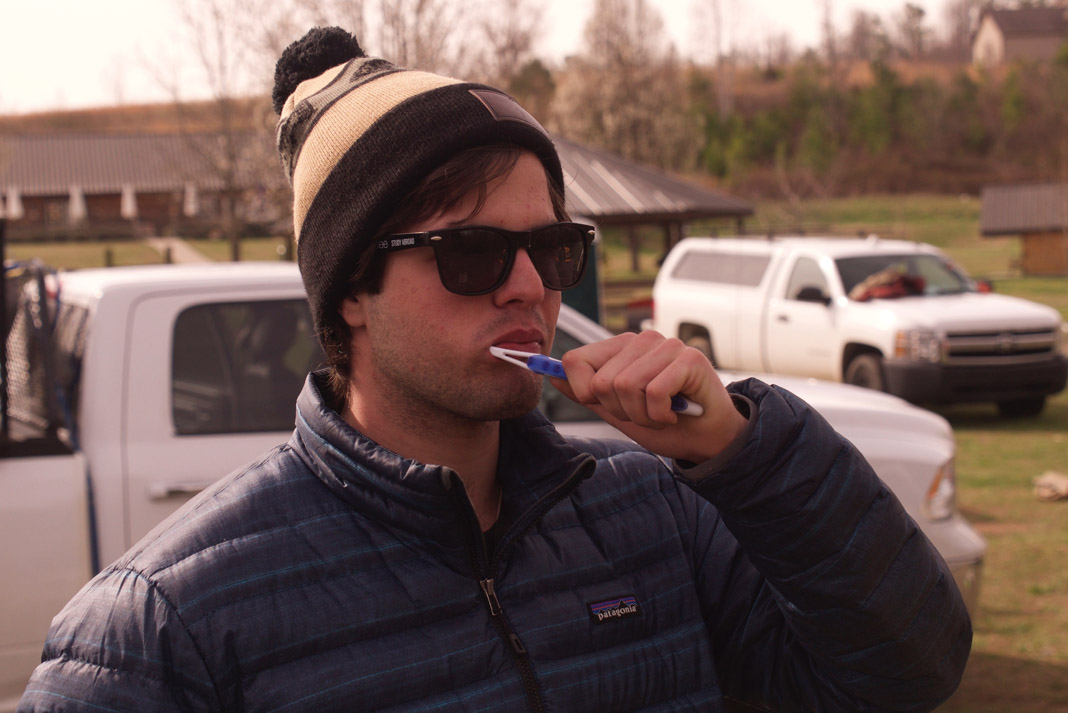
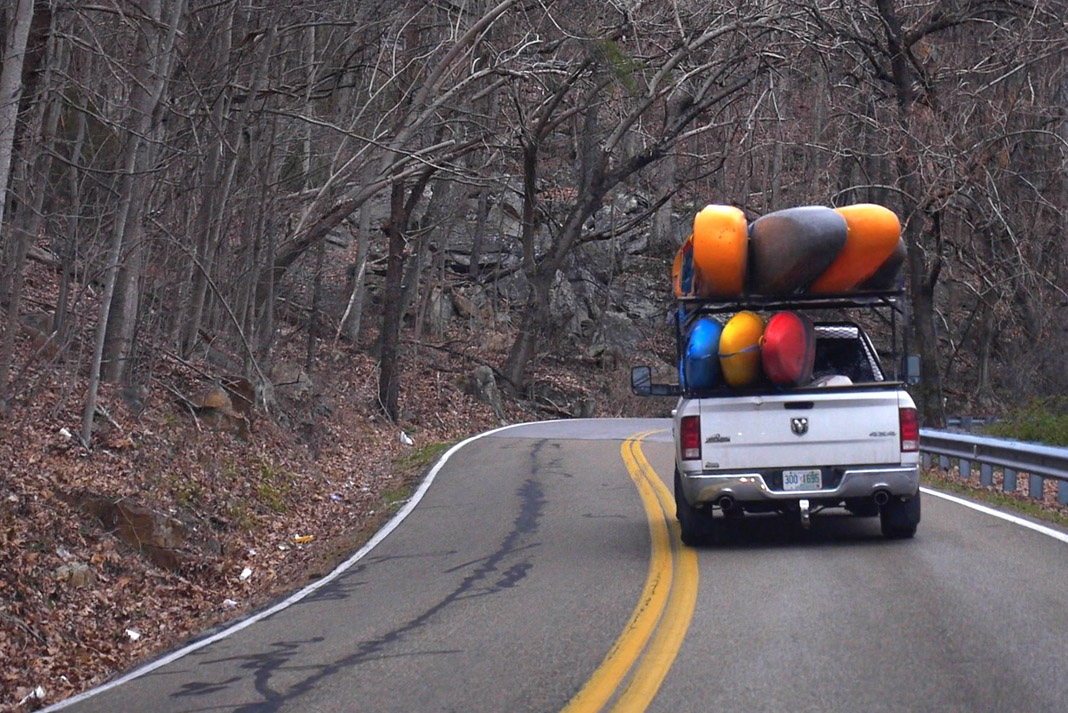
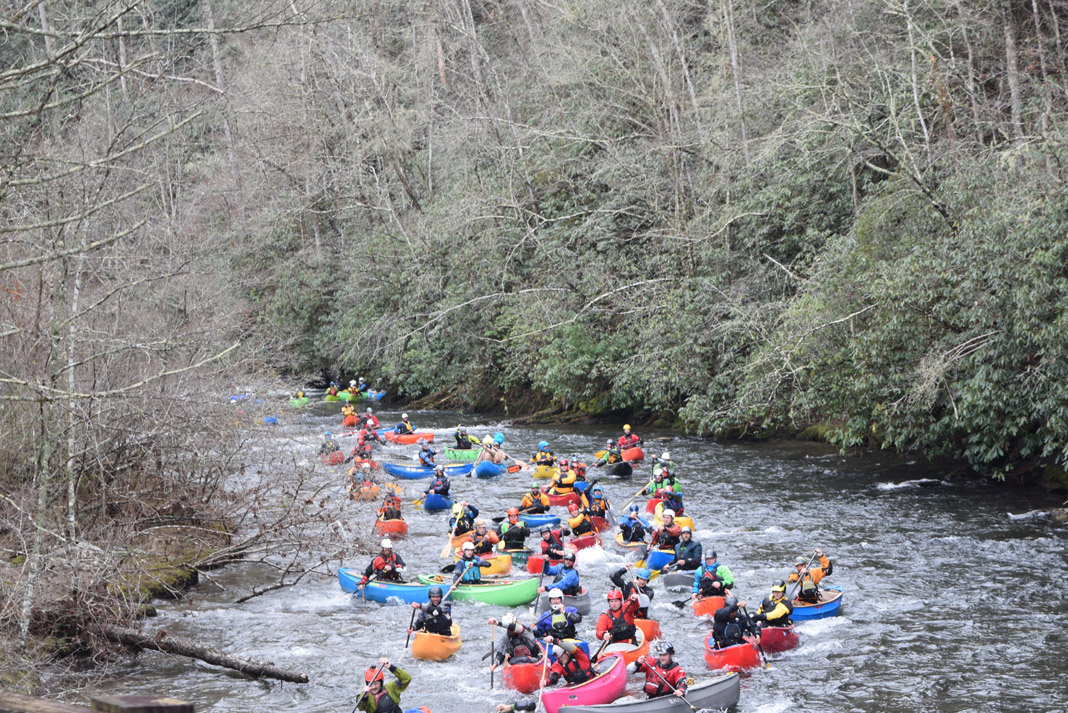
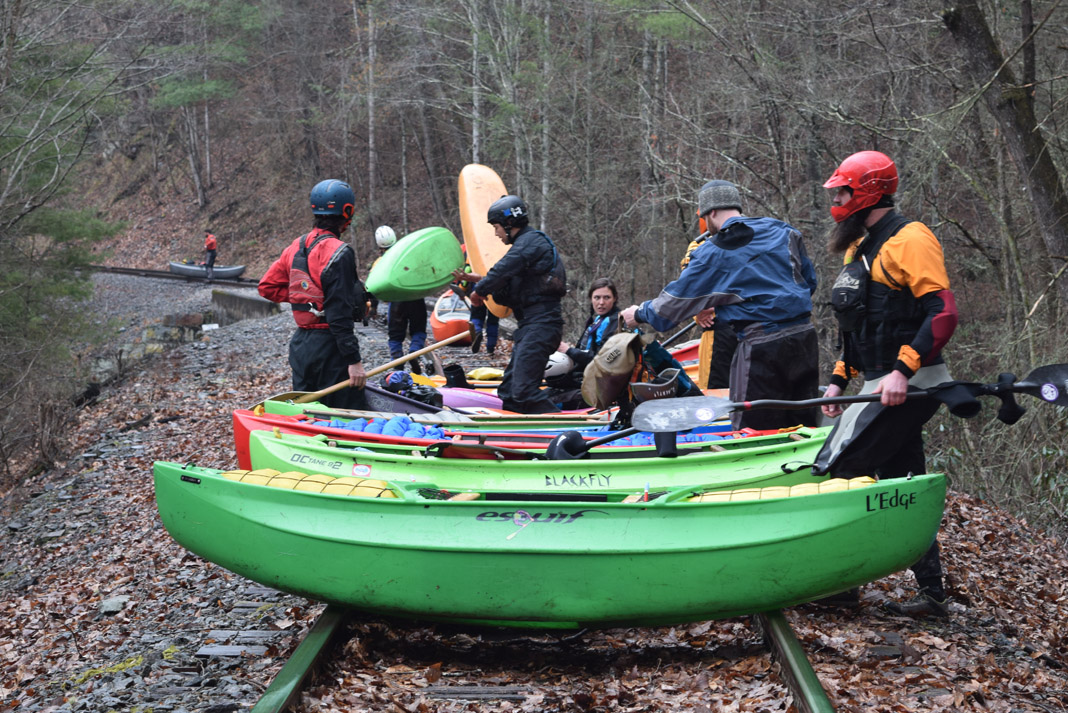
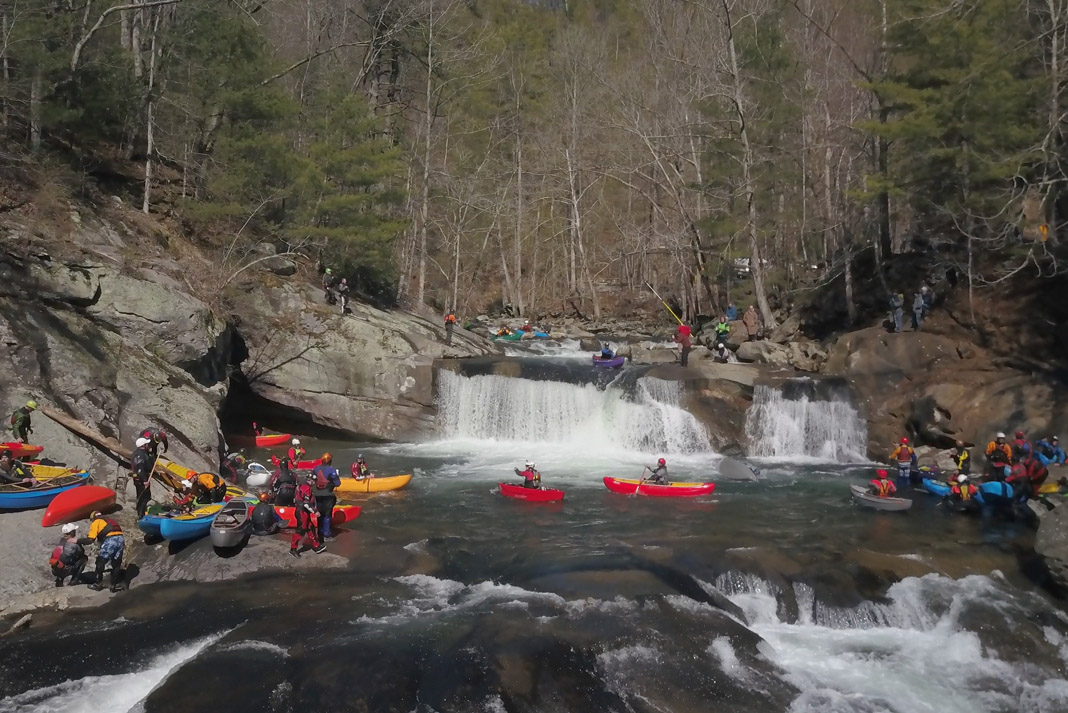
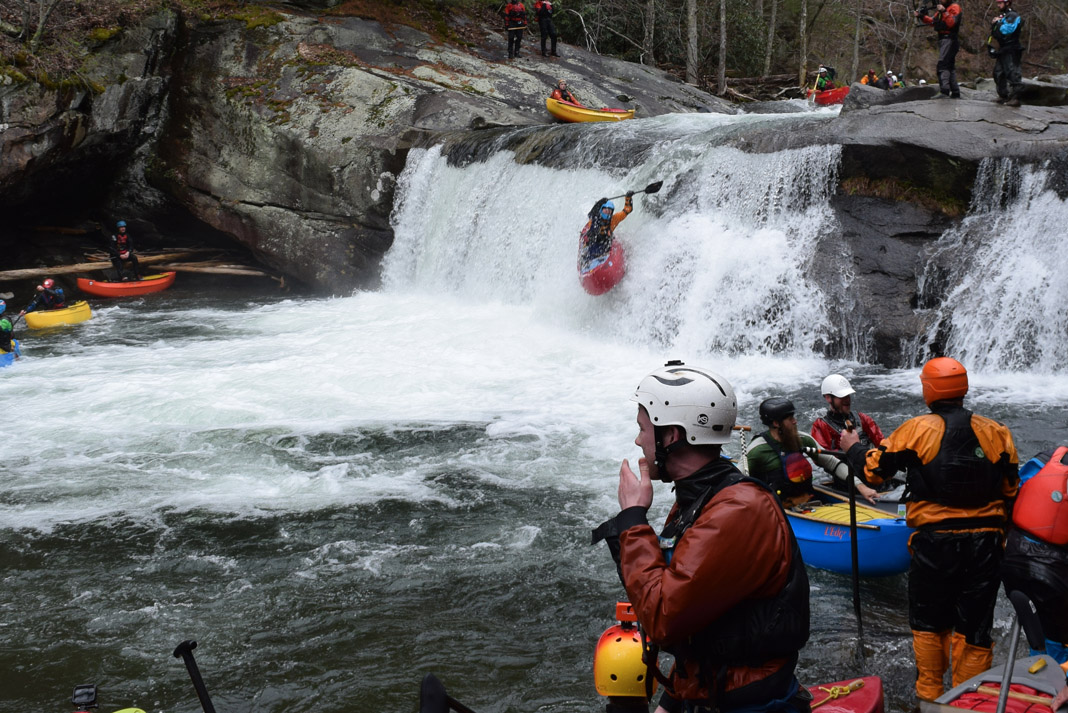
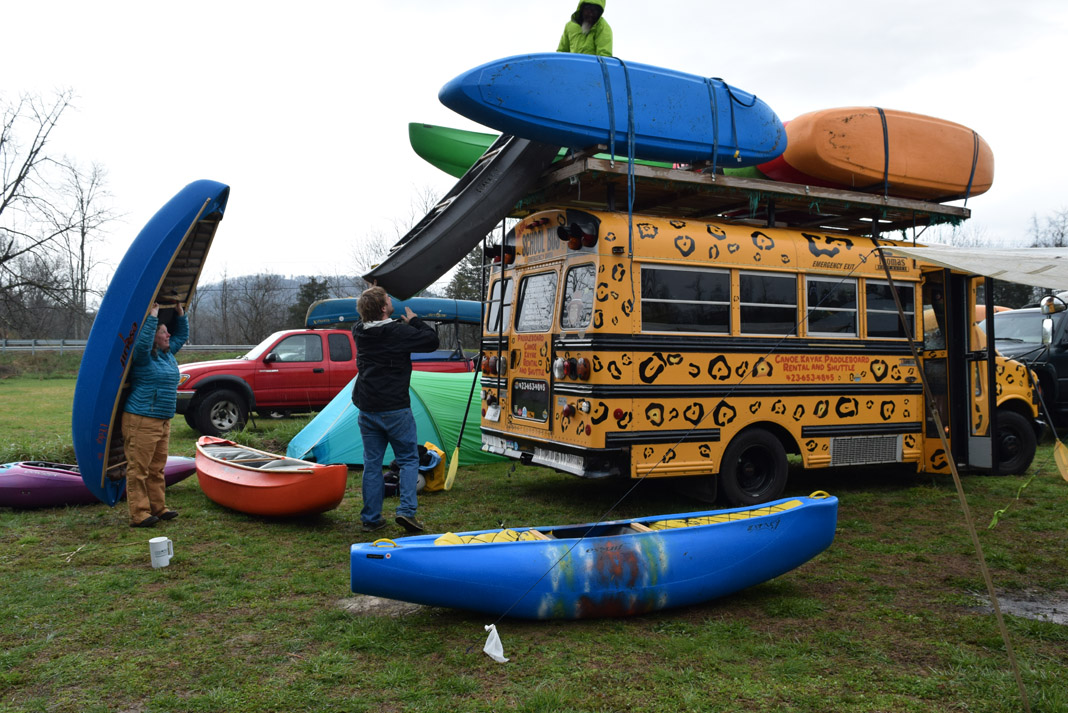
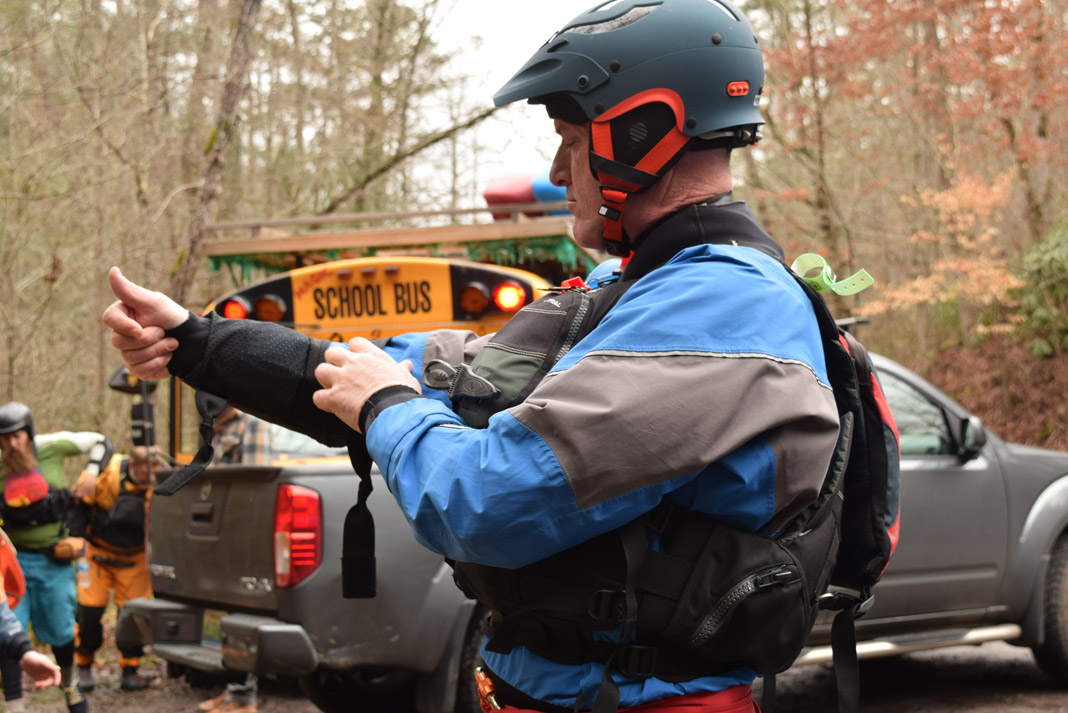
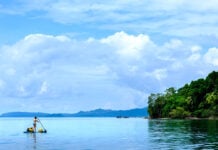


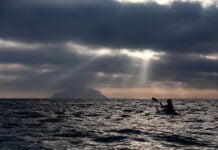
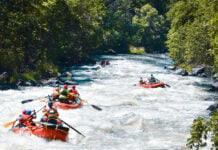

I am thinking of driving down or flying from Calgary Alberta Canada to ATTEND Alf 2025
Do you know the dates in March?
I would like to remain for month after Alf to paddle other rivers
i am trying to connect with other paddlers in N Carolina and Tennessee
my email is jay.carton.jca@gmail.com